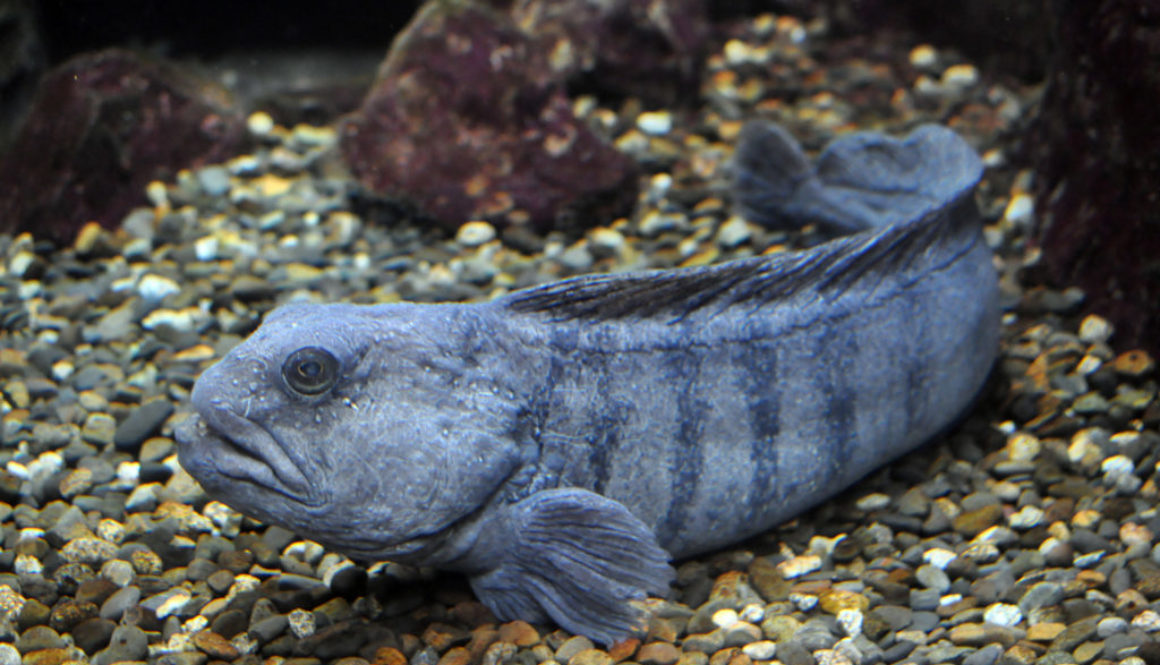Wolffish: The Underwater Protectors
Have you seen a wolffish? Let us know here! Or at cpawsnl.org/wolffish
Wolffish often have a bad reputation, with tales of their strong grip and sharp teeth, but they are extremely important to the ecosystem and not as scary as they may seem.
Wolffish as a group are easy to recognize due to their distinct and unique features such as a continuous dorsal fin and absent pelvic fins as well as prominent canine-like teeth.
Did You Know?
- The Wolffish earned this name because they have canine-like teeth, very much like a wolf!
- Wolffish not only look strong and powerful, they are! Wolffish have strong, crushing teeth and powerful jaws. This allows them to eat shrimp, brittlestars, sea urchins, crabs, and other hard-shelled bottom-dwelling organisms.
- Wolffish are also unique as, unlike many other types of fish, only one male and one female pair up to mate! They do not attempt to fertilize eggs of many females, but stale loyal to one partner.
- Another interesting thing about Wolffish is that the father fish in each mating pair guards the “nest” through late summer and early fall until all of the eggs hatch. This protects the eggs from predators, while the mother heads out to hunt for food.
- Did you know that sea urchins are a favourite food of Wolffish? Their preference for sea urchins helps protect and maintain healthy kelp ecosystems. A large amount of urchins can destroy entire beds of kelp, which are important habitats for many different species who rely on the kelp for food, shelter and nursery habitat! Wolffish can help prevent the formation of urchin barrens which is an area almost or completely denuded of kelp.
Risks and Facts
Unfortunately, Wolffish populations throughout Eastern Canada, including around Newfoundland and Labrador, have been steadily declining over the past 20 years, largely because of disturbances to their natural habitat and a significant amount of Wolffish being caught as bycatch in commercial fisheries2. Wolffish are particularly vulnerable to threats because unlike fish who lay millions of eggs and leave their larvae to their own devices, Wolffish lay only 5,000- 12,000 eggs in their lifetime of 20 years. The number of eggs a female is able to lay increases with her size, which is why it is vitally important that large females remain in the environment to ensure population sizes are healthy3. The habitat that Wolffish occupy, boulders and rocky crevices, are also increasingly at risk of dredging activity and bottom trawling. Wolffish and their habitat need to be protected because they have an important role in regulating ocean ecosystems. For instance, Wolffish are an important predator of sea urchins and green crabs, whose populations escalate rapidly and can negatively affect the health of marine systems.
How to Help Wolffish
According to Canada’s the Recovery Strategy for the Northern Wolffish and Spotted Wolffish Management Plan for the Atlantic Wolffish there are several things that can be done to ensure that Wolffish populations can recover.
- Since 2004, all Wolffish accidentally caught during any fisheries must be released, quickly, without harm to the Wolffish, and at the site of capture
- Report any sighting of Wolffish to DFO or CPAWS-NL
- Reduce plastic use and ensure plastic and other garbage are properly disposed of or recycled. Marine debris alters habitats and disrupts food chains, habitat conditions, and ultimately affects population success.
Know Your Wolffish
Northern Wolffish
The Northern Wolffish can be up to 144 centimeters long and weighs up to 20 kilograms. The Northern Wolffish’s head is small relative to its body, pectoral fins and gill openings are also small. The body colour is more uniform for all sizes, ranging from dark grey to dark brown to purplish black. Indistinct dark spots are possible, but rare. Flesh is jelly-like.2
Spotted Wolffish
The Spotted Wolffish can be up to 150 centimeters long and weigh up to 22 kilograms.The head is large relative to the body, with dark spots on fins and body. Juveniles are greyish brown (sometimes with a purplish colour), and adults range from yellowish brown to greyish brown to dark brown. Their flesh is firm.2
Atlantic Wolffish
The Atlantic Wolffish, is classified as special concern. These Wolffish are up to 152 centimeters long and weigh up to 22 kilograms. Their head is large relative to the body, it has vertical stripes on the fins and body. Juveniles are yellowish brown with olive green fins, and adults range from yellowish brown to slate/purplish blue. Their flesh is firm.

